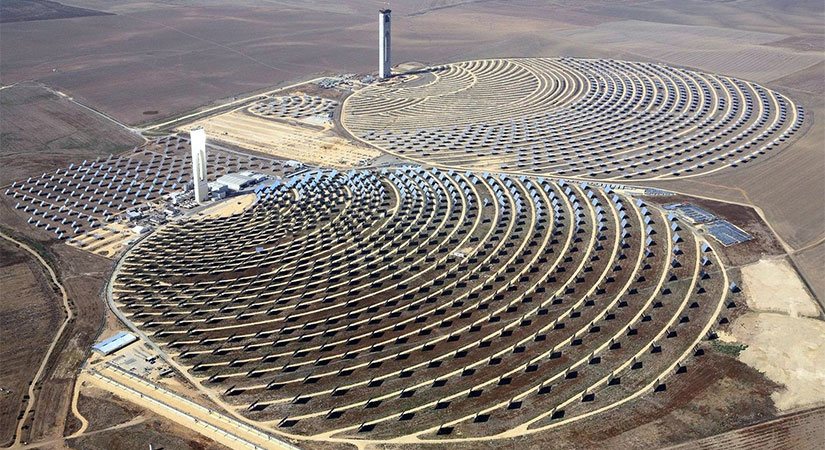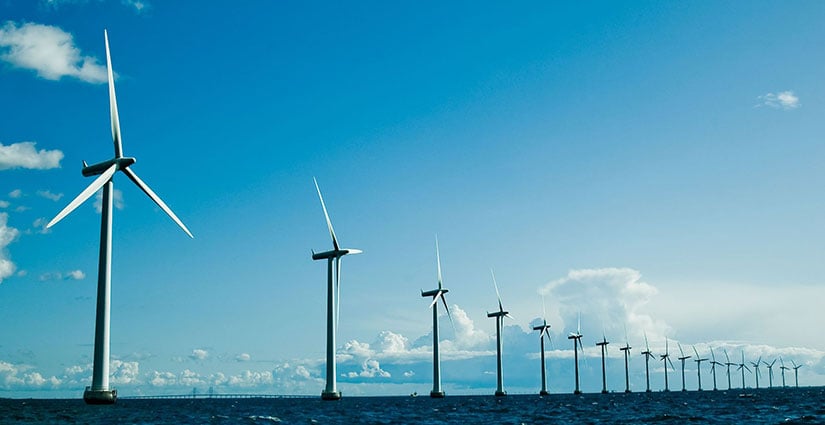
Solar towers from the PS10 and PS20 solar plants in Seville, Spain. Combined they provide enough power for over 200,000 homes.
The United Nations Climate Change Conference held in Paris at the end of 2015 was hailed as a major victory, bringing about a global agreement between 55 countries to reduce the effects of climate change by limiting global warming to less than 2 degrees Celsius and to accomplish zero greenhouse gas emissions between 2030 and 2050.
Greenhouse gases absorb infrared radiation, trapping heat in the atmosphere, thus creating the greenhouse gas effect which leads to global warming. Sixty-five percent of greenhouse gas is carbon dioxide pumped into the environment through the burning of fossil fuels and industry processes, particularly in the production of electricity and heat.
There is no disputing that the main solution for offsetting global warming is to increase the use of renewable energy sources; sources which exist freely in nature, never run out and are eco-friendly. The research and development of solar power, wind power, hydroelectricity and bio-fuel alternatives are crucial.
Likewise, the use of composites in renewable energy will play an increasingly vital role through the manufacture of structures which enable the harnessing of sustainable energy sources. Factors such as the reduced weight compared to metallic structures, lower transportation and erection costs, and most importantly, lower maintenance costs over the lifespan of the structure are already positioning composites as a de facto material enabling economical solutions to large scale projects.
Advancements in Composite Technology
Composite materials are engineered from two or more constituent materials combined to create a material that is chemically and physically different from its individual components. Many high performance composites exist, yet most notable for renewable energy structures are variations of fiber-reinforced polymers (FRPs), carbon-fiber-reinforced polymers (CFRPs) and glass-reinforced plastic (GRPs or e-glass) are leaders in the ever advancing materials engineering sectors.
Reinforced polymers are made from a polymer base such as epoxy or polyester thermosetting plastic and infused with a fiber matrix of glass, carbon, aramids or other fibers. Our society is surrounded with products made of composite materials and many substantial advancements in ballistic armor, aerospace, marine, automotive and construction industry would not have been possible without the use of advanced composites. Materials technology has grown from the early days of fiberglass as a major composite material to carbon composite materials which are lighter and stronger. Carbon fiber polymers are also highly resistant to heat, giving NASA a viable option for spacecraft able to withstand the intense heat of atmospheric re-entry.
Composites in Turbine Blade Technology
The lightweight and complex airfoil shape of blades for wind turbines have made composites a leader in this sector using molds that are engineered to economically manufacture blades with minimal labor. Presently research and development is aimed at satisfying the increased size needed in turbine and rotor blades for land-based and off-shore systems.

The GE 1.5 megaWatt wind turbine consists of three 116 ft. fiberglass blades and a blade assembly which weighs 36 tons. As these structures continue to get larger, the longer blades will require the structural stiffness and lighter weight of carbon fibers. Also, lighter blades require less power from the turbine and a less robust tower construction. A switch to carbon fibers over e-glass (engineered glass reinforced fibers) for turbine blades can add 16 feet in blade length without any additional weight gain.
In the off-shore wind power industry, 300 feet long blades composed of composite material on 8-10 megaWatt turbines are possible in the next three to five years. The challenge remains in overcoming the higher manufacturing costs of carbon composite materials, because carbon composite materials require perfect alignment of the fibers and rapid curing to maintain its impressive compression and fatigue strength.




